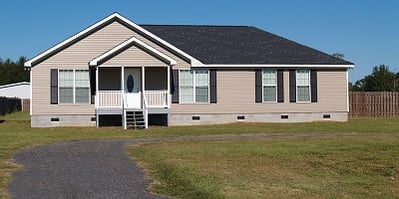
It's not difficult for non-industry people to get a bit confused about the differences between mobile, modular, and manufactured homes. The three seem similar enough to almost sound like the same basic thing, plus there are many practical similarities between the three that you as a contractor can use tools such as BECK’s F44AC Nailer to rapidly assemble any of these housing structures. However, though they may sound the same and have some similar building requirements, they are most definitely not the same. There are some practical differences between the three that are worth mentioning in further detail.
The Legal Side
Before we get down to the details, the basic distinction between modular, mobile, and manufactured is this, and it comes with a bit of obscure regulatory definition: Based on Housing and Urban Development (HUD) regulations, outlined in the HUD Manufactured Home Construction and Safety Standards of 1976 (aka: the Hud Code), mobile homes are factory-built housing units from before June 15, 1976.
Prefabricated housing units built after that date are considered manufactured homes. Modular homes on the other hand are very similar to manufactured homes but are governed by different laws.
Mobile Homes
While modular and manufactured homes look almost indistinguishable from each other to the untrained eye, mobile homes are what we normally associate with the classic image of a large camper trailer that can be moved around on wheels and parked in a property lot. These structures were mass-produced in the decades between World War II and 1974, until the legal changes outlined in the HUD regulations.
Mobile homes are still common, but a prefabricated structure built for use as housing is no longer legally called a mobile home.
Manufactured Homes
The HUD construction code of 1976 sets out the specific weather-resistance, energy and stability loads that these homes must meet. Manufactured homes don't need to have permanent foundation structures, but they often do come with these due to local rules or financial reasons. For example, a modular home that isn't situated on a permanent concrete foundation may not be classified as a real estate property for the sake of property tax rates.
Some manufactured homes come with what are called pier and beam foundations, meaning that they can also be relocated to a new property just like a mobile home, but with a few special conditions that contractors should be hired to handle.
Unlike mobile homes, manufactured housing can be extremely versatile in its design parameters. They can easily include all the typical heating, plumbing and other amenities such as decks, that are commonly found in conventional houses or apartments. They can also be remarkably robust, with the ability to withstand winds of nearly 200 mph and heavy storm weather despite their prefabricated build.
Modular Homes
Modular homes are nearly the same as manufactured homes. In fact, the two can be essentially indistinguishable except for specific design details that the national HUD code specifically enforces for legally defined manufactured homes. With that said, many modular homes are built according to standards, state building codes and municipal building laws similar to those of HUD. This of course means that they can often look almost exactly like manufactured houses.
On the other hand, because their range of possible building regulations is more varied, it's possible for you to build a modular home in ways that are much closer to the standards for traditional site-built houses, depending on where you're working.
Using the Right Tools for Your Desired Home
Mobile home construction is mostly a thing of the past, but when it comes to their modular and manufactured counterparts, rapid, easy assembly still rules the day. For this kind of work, your absolute best friends will be a strong range of high-quality power tools. This applies specially to nail guns. BECK’s F44AC is the ideal choice for the job.
This robustly built, superbly balanced fastener gun delivers single-shot contact actuation with coil-loading and is designed for 15° or 0° wire or plastic sheet coil nails. It's specifically designed to firmly handle manufactured housing, sheathing, siding and subflooring needs. All of these will be a crucial part of your next modular or manufactured home construction project. Download our brochure to learn more about this superior tool!
.svg.png)

